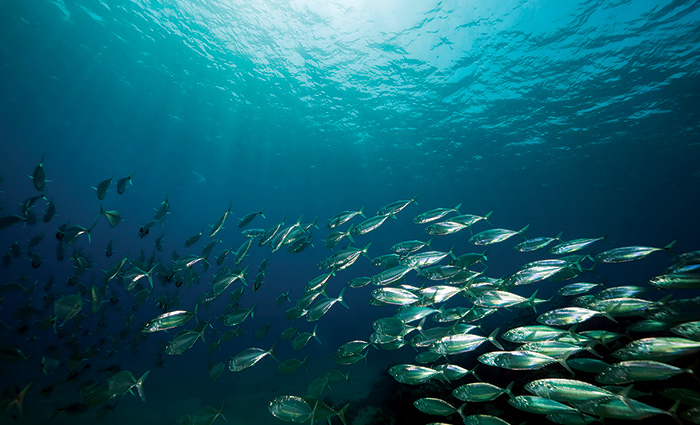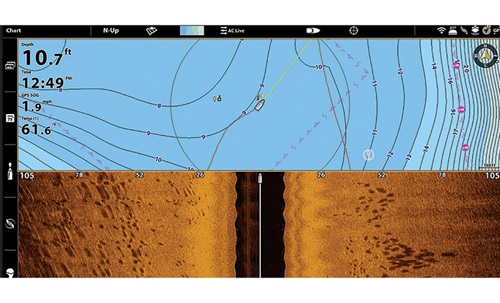Advertisement
Take your side-scanning fishfinder off auto mode, and you’ll be spotting your prey from afar in no time

Photo: Getty Images
Modern down-looking fishfinders have such advanced auto-tuning features that it’s rare you need to make manual adjustments. But when it comes to side-scanning units (which offer a far greater side-to-side range compared to only what’s under your boat), it’s a whole different ballgame. The size of your unit, bottom composition, water depth, and conditions all have a dramatic effect on how those high-frequency pings and pulses show up on your screen. If you leave the settings on automatic, you’re missing out.
Frequency
Some side-scanning fishfinders allow you to adjust the frequency, while others don’t. If yours does, remember that the higher the frequency, the better the detail but shorter the range. As a general rule, frequencies in the 800-plus kHz range are best for finding those scaled critters out to around 100 to 150 feet (depending on conditions and other variables). Beyond that range, you’ll want to use lower frequencies in the 400- to 500-kHz range.
Range
Farther isn’t always better. By shrinking the range, you can dedicate more LCD screen space to the specific areas you’re trying to see, thus showing a more detailed view of structure and (hopefully) the fish hiding around it. Setting range out so far that there’s blank screen beyond the returns is a waste of space, and setting it too close in eliminates information about what’s beyond the setting. The smaller your screen, the more critical it is to take advantage of every pixel.
Depth also limits your effective range. The exact capabilities will differ from unit to unit depending on transducers and beam angles, but generally, you won’t get good readings beyond about 20 times the depth. So, for example, if you’re fishing the shallows in 4 feet of water, it doesn’t make sense to eat up screen space by setting range to 100 feet rather than 80 feet.
Contrast
Contrast level can help you make out subtle details that could translate into the difference between seeing a rock and seeing a rockfish. The type of structure that’s present and bottom composition are key players in how the contrast appears to the eye, and, again, there will be differences from unit to unit. In this case, your color palette choice will also have an impact.
Generally speaking, you’ll want to boost the contrast when looking for fish holding close to a hard bottom, like shell or gravel. Over a soft, muddy bottom, however, a lower contrast may prove beneficial. Contrast and sensitivity work hand in hand, so, before you start making those adjustments, consider the next section, too.

Note how fish at closer distances are very clear returns, but as they near the limit of the effective range dictated by depth, they become indistinct and difficult to differentiate. Photo: Humminbird Apex

With the settings properly tweaked, you can make out amazing detail, even the difference between schools of baitfish (large white patches) and the predators hunting them (arrow). Photo: Furuno Navnet Tztouch3 Chirp Side-Scan
Sensitivity
Crank the sensitivity up too high and your screen will be flooded with clutter. Dial it down too low and it will be blank. Like contrast, finding the best sensitivity setting depends to some degree on structure and bottom composition. On a hard bottom it’s usually best to dial it down a bit; on a soft bottom, crank it up. Depth also plays a role, though, and a higher sensitivity will help you make out those wispy marks that are right on the periphery of the unit’s range.
The bottom line? You’ll usually want to adjust contrast and sensitivity in tandem to some degree, toning down one while hiking the other. Another, even more important bottom line: Start playing with all these adjustments, because if that side-scanning fishfinder is set to auto mode, you’re almost certainly missing out on some of those fish.
